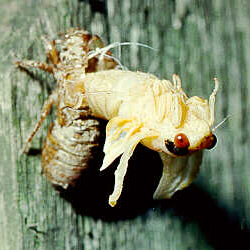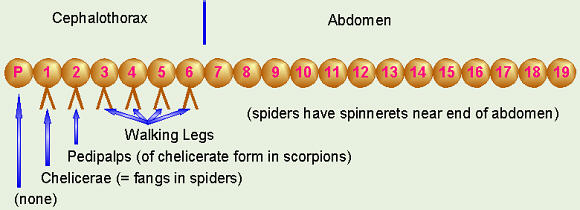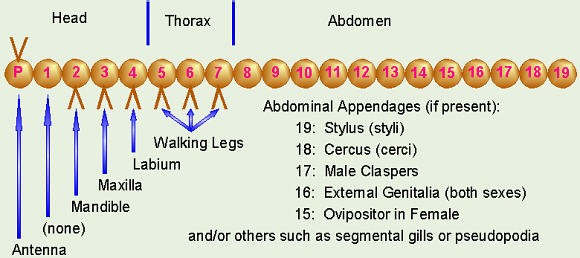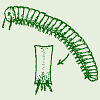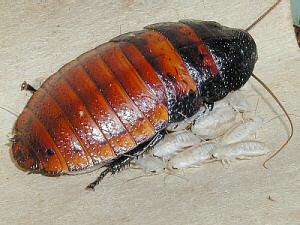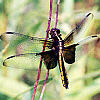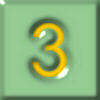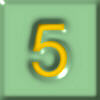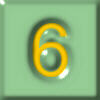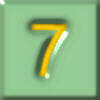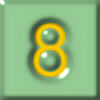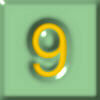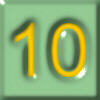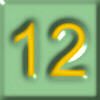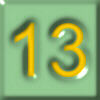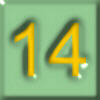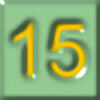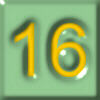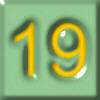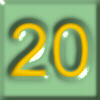2-D says, “Finally! You got here. Here’s where all my
relatives and I fit in. There are more of us than of you, so that makes us
really important. We insects live pretty-much everywhere on earth except
out, deep in the ocean, but our cousins the Crustacea have that covered.”
It is thought that the early arthropod ancestors (descended
from organisms that looked like marine worms or, later, Peripatus)
looked sort of like a centipede: they had a number of body segments, each
with a pair of jointed appendages. From there, some of these segments
became fused to form a head and some of the appendages became modified to
form mouthparts or antennae. Early on, there was an evolutionary split
which led to the various modern subphyla and classes. Currently, three
living subphyla are recognized, with trilobites representing an extinct
fourth subphylum.
Class
example(s) |
Number of
antennae |
Number of legs
& attachment |
Number of body parts
& attachment |
Photo |
| Subphylum Trilobitomorpha |
Class Trilobita
trilobites |
These were most common during the Cambrian and Ordovician
periods of geological history, and can be found preserved in a number of
rock formations in the Cincinnati area. They are now extinct. |
|
| Subphylum Chelicerata |
Class Merostomata
horseshoe crabs |
|
|
|
|
Class Arachnida
spiders
scorpions
mites
ticks
daddy-long-legs |
0 |
4 prs, att. to cephalothorax, (chelicerae & pedipalps are m.p.) |
cephalothorax & abdomen |
 |
Class Pycnogonida
sea spiders |
|
|
|
|
| Subphylum Crustacea |
Class Malacostraca
crayfish
crabs
pillbugs
etc. |
2 pair |
5 prs incl. cheliped att. to cephalothorax, and swimmerets, m.p.,
incl. mandibles |
cephalothorax & abdomen |
|
| Note: there are quite a number of other classes of Crustacea not listed here. |
| Subphylum Atelocerata |
Class Diplopoda
millipedes |
1 pair |
many, 2 pr per apparent segment bec of fused segm., m.p. incl.
mandibles |
head and “trunk” segments, every two segments fused into one
apparent segment |
|
Class Chilopoda
centipedes |
1 pair |
many, 1 pr per segment, m.p. incl. mandibles & poison claw on next segm. |
head and “trunk” segments |
 |
Class Pauropoda
pauropods |
|
|
|
|
Class Symphyla
symphylans |
|
|
|
|
Class Hexapoda (Insecta)
insects |
1 pair |
3 pr, 1 pr. per thoracic segment, m.p. incl mandibles, some
abdominal |
head, three-segmented thorax, segmented abdomen
(wings are not appendages) |
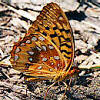 |
This list only includes some of the more common insect
orders. There are other, less common ones that have been left off the
list.
Order
example(s) |
Type of Front Wing |
Type of Back Wing |
Other Notes |
Photo |
| Subclass Entognatha |
| (endo,
ento = within, inner; gnatho = the jaw), mouthparts within the head, primarily wingless, simple metamorphosis, no longer considered to be insects |
Collembola
springtail |
none |
none |
(coll = glue; embola
= a bolt or wedge) — collophore on bottom of 1st
abdominal segm., for water uptake + furcula = jumping organ
on ventral abdomen
|
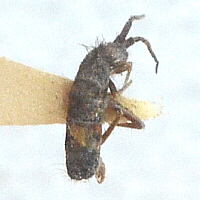 |
| Subclass Insecta |
| (ecto = outside,
out, outer) ectognathous — mouthparts stick out from head |
| Apterygota |
| (a- = not,
without; ptero = wing, feather) primarily wingless, simple
metamorphosis |
Thysanura
silverfish
firebrats |
none |
none |
(thysan = fringe) — somewhat
flattened body, three taillike structures on posterior end, body often
covered with scales
|
|
| Pterygota |
| winged (a few are secondarily wingless) |
| Exopterygota |
(exo
= out, outside) — gradual metamorphosis, wing pads develop externally,
young are called nymphs (naiads if aquatic) —
Ephemeroptera, Odonata, and Plecoptera, which have aquatic
naiads,
are said to be hemimetabolous
(hemi = half).
|
Ephemeroptera
mayflies |
membranous |
membranous, smaller than front wings |
(ephemer = for a day,
temporary) — aquatic naiads, winged subimago, then adult; very
short-lived as adults |
|
Odonata
dragonfly
damselfly |
membranous
long & narrow |
membranous
long & narrow |
(odonto = tooth) — have “teeth”
on mandibles, aquatic naiads; chewing mp; long & slender
|
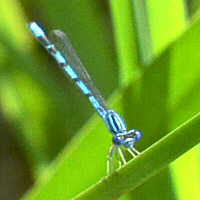 |
Phasmida
walkingstick
leaf insect |
leathery tegmina
(or absent) |
membranous
(or absent) |
(phasmato = apparition,
phantom) — chewing mp; look like sticks or leaves, &
well-camouflaged |
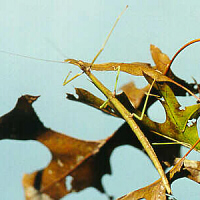 |
Orthoptera
grasshopper
katydid
camel cricket
cricket |
leathery tegmina
(or absent) |
membranous
(or absent) |
(ortho = straight) —
jumping back legs; chewing mouthparts |
 |
Mantodea
mantis |
leathery tegmina
(or absent) |
membranous
(or absent) |
(manti, mantid,
mantis = a soothsayer, a kind of grasshopper) — chewing mp; front
legs adapted for catching prey |
 |
Blattaria
cockroach |
leathery tegmina
(or absent) |
membranous
(or absent) |
(blatta = cockroach) —
chewing mp; legs adapted for running |
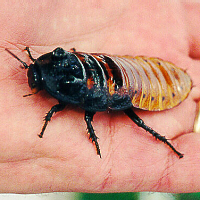 |
Isoptera
termite |
membranous
(or absent) |
membranous; same size as front (or absent) |
(iso = equal) — light-colored;
no “waist”; chewing mp; small size;
social with castes, winged reproductives; |
|
Dermaptera
earwig |
shortened = brachypterous
(or absent);
leathery, called tegmina or elytra |
membranous; folded under front wings (or absent) |
(derm = skin) — forceps-like
cerci at end of abdomen |
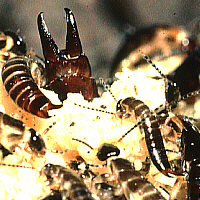 |
Plecoptera
stoneflies |
membranous |
membranous, “bottom” area folded under at rest |
(pleco = twine, twist,
braid, twisted, folded) — aquatic naiads |
|
Phthiraptera
lice
Suborder Mallophaga
chewing lice;
Suborder Anoplura
sucking lice |
none |
none |
(phthir = lice) —
ectoparasites (mostly on birds or mammals) |
|
Hemiptera
true bug |
half-leathery, half-membranous hemelytra;
“X” when folded |
membranous |
(hemi = half) —
piercing-sucking mp; |
 |
Homoptera
leafhopper
cicada
aphid
scale insect |
membranous
(or absent) |
membranous
(or absent) |
(homo = same,
like, alike) — piercing-sucking mp |
 |
| similar
to each other (unlike true bugs), held
rooflike or tentlike over body when at rest |
| Endopterygota |
(endo = within, inner) — complete metamorphosis,
wing pads develop internally until pupal stage, young called larvae |
Neuroptera
dobsonfly
lacewing
antlion |
membranous |
membranous |
(neuro = nerve, sinew, cord)
— named for wing veins; dobsonfly larvae are aquatic; many prey
on other insects
(Photo © D.B.
Fankhauser) |
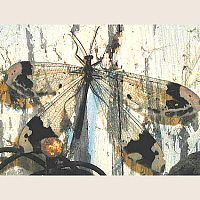 |
Coleoptera
beetle |
hard, shell-like elytra |
membranous |
(coleo = a sheath) — chewing
mouthparts; largest order with ~40% of all insects |
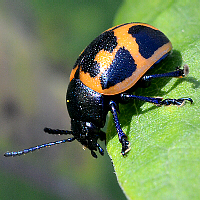 |
Mecoptera
scorpionfly |
membranous |
membranous |
(meco = long, length) — tip
of male’s abdomen curls up, resembling shape of scorpion’s (photo is female);
long, snout-like head |
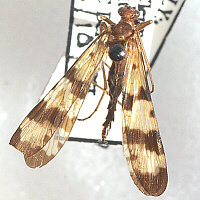 |
Siphonaptera
flea |
none |
none |
(siphon = tube, pipe) —
pupa in cocoon; blood-sucking; jumping; small & flat |
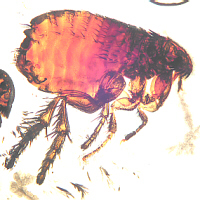 |
Diptera
fly
mosquito
cranefly
gnat |
membranous |
modified as halteres |
(di = two) — adults with
sponging, cutting-sponging, or piercing-sucking mp |
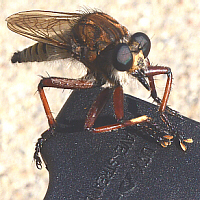 |
Lepidoptera
butterfly
skipper
moth |
bright color due to scales |
bright color due to scales |
(lepido = a scale) — siphoning mp in adults, chewing in larvae (caterpillar) |
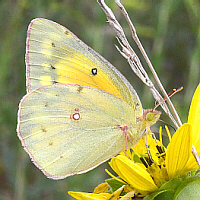 |
Hymenoptera
bee
ant
wasp |
membranous
(or absent) |
membranous,
smaller than front
(or absent) |
(hymeno = a membrane) — have a
“waist”; chewing mp; many can sting; many social in colonies; often black
& yellow bodies |
 |
Try to match an insect picture with the name of the order in
which that insect belongs. Click on two squares.
OK... Javascript weirdness... it wouldn’t show the second picture clicked
before “turning them back over.” So, I got that fixed – sort-of. It will
now display the first two pictures clicked, then when you click on a third
one, it will go back and check the first two. I know, that makes it
easy to lose track of whether you’re on a “first” or “second” click, but
eventually you should be able to get to the end of it. When you click
anywhere on the squares after you match the last pair, the pictures will
reload in a different order so you can try again.
